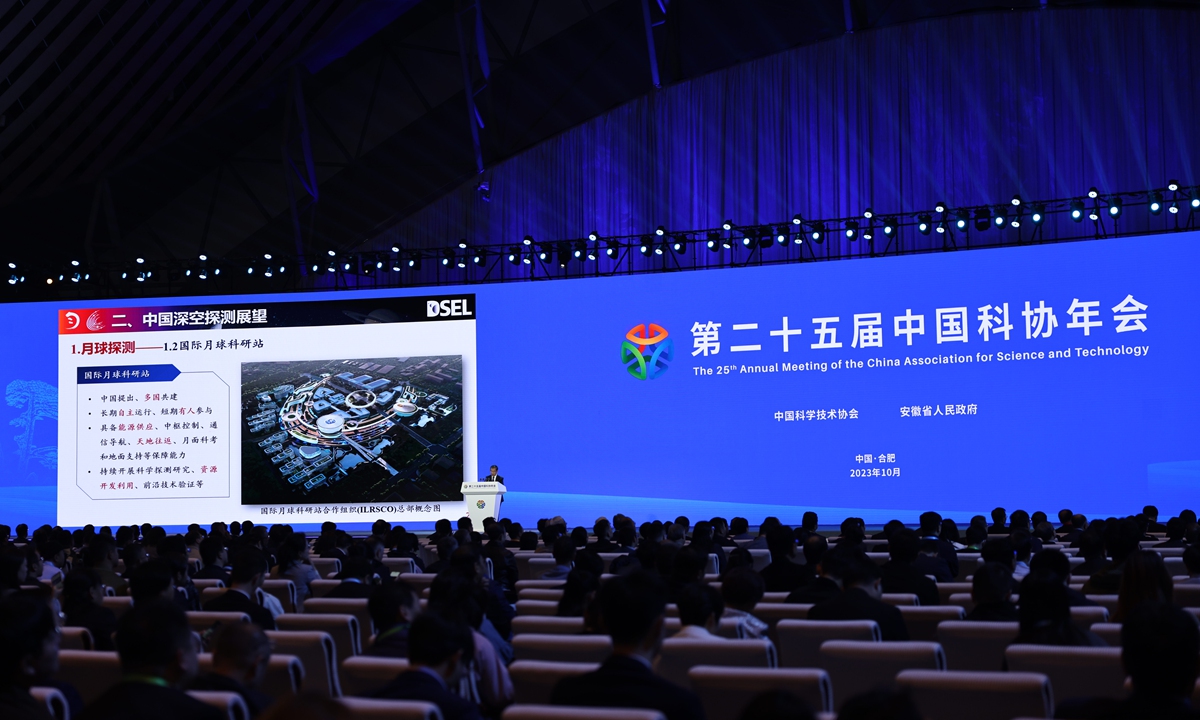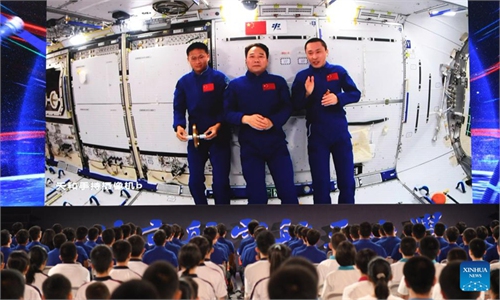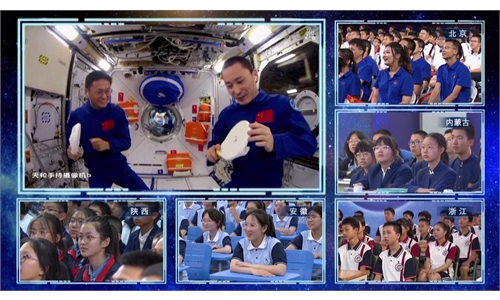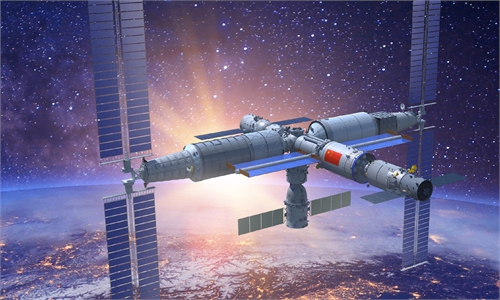Chief scientist outlines space plans for next 15 years
US suppression fails to contain China’s space development

Photo: Deng Xiaoci/GT
Regardless of the US' suppression of China's development in the space sector, which has been no less than that of the chip industry, China's capabilities in moon and planetary exploration have advanced to a world leading level, according to Wu Weiren, chief designer of China's lunar exploration program and an academician at the Chinese Academy of Engineering on Sunday.
Wu, who is also the chief scientist and director of China's Deep Space Exploration Laboratory (DSEL,) made the remarks during his keynote speech at the opening ceremony for the 25th Annual Meeting of the China Association for Science and Technology, the most important gathering of Chinese scientific circles, held this year in Heifei, capital city of East China's Anhui Province, on Sunday.
In his speech, Wu congratulated the Chandrayaan 3, India's first-ever successful robotic moon landing in August, and expressed regrets over Russia's failed Luna-25 robotic lunar landing attempt, also in August.
Then he mentioned another major event in international deep space exploration endeavors - the US high-profile Artemis project, which aims to return Americans to the moon and has already gathered nearly 30 countries under a collaboration accord.
"The US is planning to return to the moon, build a moon base and then use it as a springboard for its future Mars landings," Wu said.
However, China is excluded from the US project.
"China's deep space exploration is facing serious challenges marked by a blockade and isolation from the US-led West, which is comparable with the suppression the country's suffering from in the chip industry. The deep space exploration has become a new commanding height of international scientific and technological competition and a new frontier for great power competition," Wu said.
However, with the slew of successes China has independently achieved in the deep space exploration domain in the past decades with milestone feats, including the Chang'e-4 soft landing on the dark side of the moon in January 2019, which was a human first, the epic lunar sample returning mission of the Chang'e-5 in October 2020 as well as the success of Tianwen-1, the country's first-ever Mars exploration mission, China's capabilities in moon and planetary exploration have advanced to world leading level, the DSEL chief noted.
According to the chief scientist, China's deep space spacecraft tracking and control capabilities have also been boosted in the process, realizing a major leap in deep space tracking and control distance from hundreds of thousands of kilometers to tens of billions of kilometers, growing to the equivalent of its US and European counterparts.
Next, China will launch the Stage 4 lunar probe missions - the Chang'e-6, -7 and -8 - carry out new planetary exploration missions and further upgrade the country's space launch capabilities in the next 15 years, Wu outlined.
The Chang'e-6, to be launched in 2024, will attempt to achieve the world's first lunar sample return from the dark side of the moon. The Chang'e-7 mission, set for 2026, aims to land on the moon's south pole and carry out lunar resource and environment surveys in the area. Besides that, the Chang'e-8 will verify new technology that makes use of lunar resources.
The building of the China-proposed International Lunar Research Station (ILRS), which involves the participation of multiple countries, is also on the agenda. Currently, the DSEL is working with the China National Space Administration (CNSA) to organize Chinese academicians and experts to conduct a feasibility study of project plans, Wu disclosed.
Azerbaijan has become the newest member of ILRS collaboration, with the country having signed a joint statement on cooperation with China in early October. Before that, Venezuela just formally joined the lunar station initiative in July.
The CNSA has this year signed joint statements on the ILRS with the Asia-Pacific Space Cooperation Organization (APSCO), Swiss firm nanoSPACE AG, and the Hawaii-based International Lunar Observatory Association (ILOA). Pakistan has also expressed its intent to join the ILRS.
"China plans to achieve a manned moon landing around 2030," Wu said.
China also plans to carry out planetary exploration missions, including the Tianwen-2 asteroid sample returning mission, Tianwen-3 Mars sample returning mission and the first implementation of a near-Earth asteroid defense mission, he said.
"In view of the extremely low probability and extremely harmful event of a near-Earth asteroid impacting the Earth, we will implement a kinetic energy impact on an asteroid tens of millions of kilometers away to change its orbit, and conduct an on-orbit impact assessment" Wu announced on Sunday.
China will also develop new super heavy-lift rocket with a diameter of 10 meters that will be capable of sending a payload of 150 tons to near-Earth orbit, pushing the limit of the current strongest Long March-5 at 25 tons.
At the 25th Annual Meeting of the China Association for Science and Technology opening ceremony in Hefei, Chinese scientists and researchers also unveiled the top 10 frontier scientific issues to work on for 2023, which includes how to achieve energy-efficient Artificial Intelligence, the top 10 difficult engineering questions, including how to achieve a crewed round trip Mars mission using space nuclear power, as well as the top 9 industrial questions, such as how to break through the application of carbon fiber composites in China's future ultra-high-speed trains.




